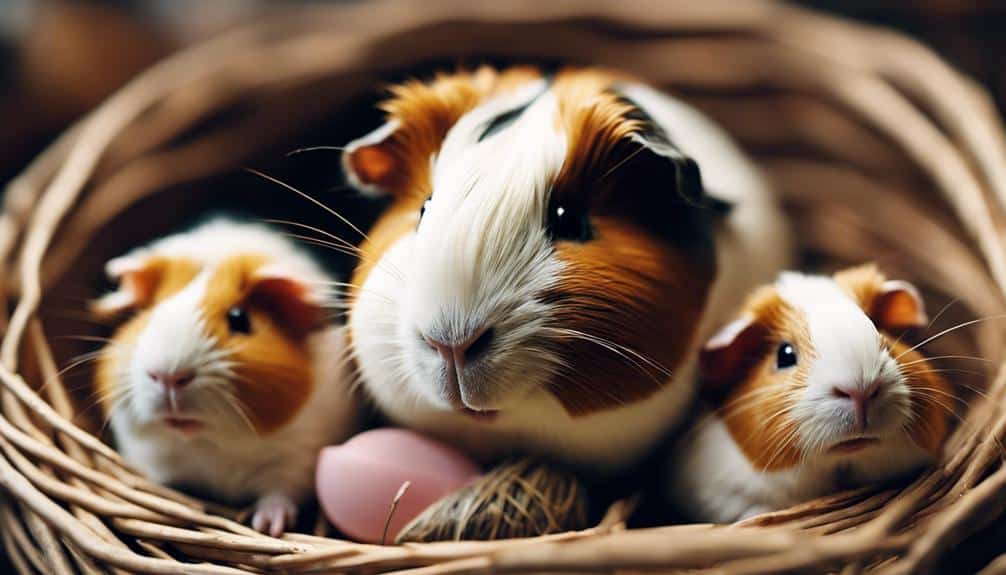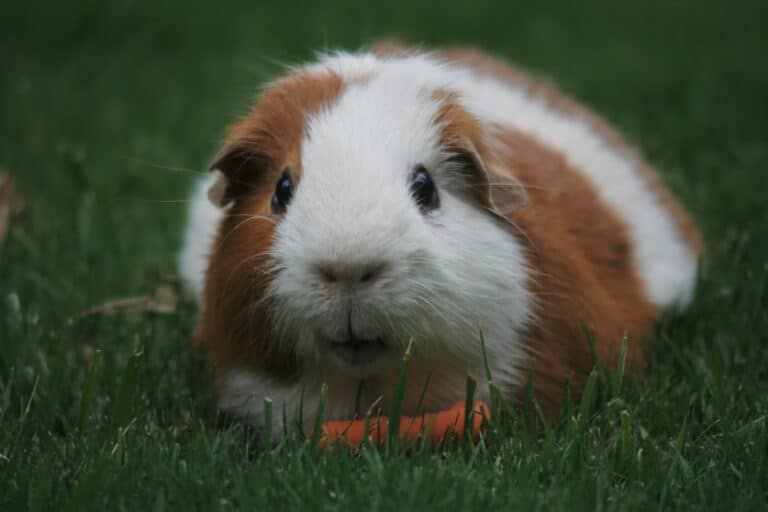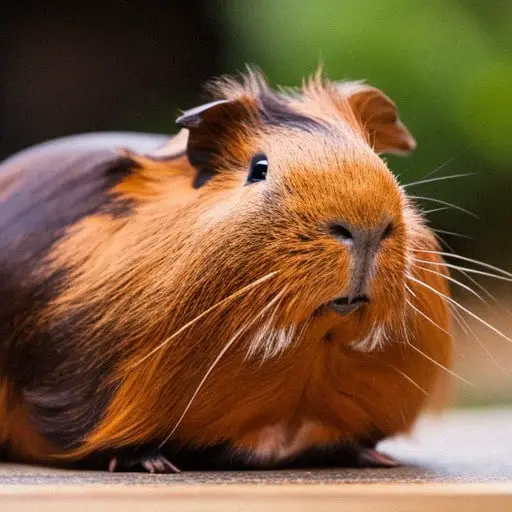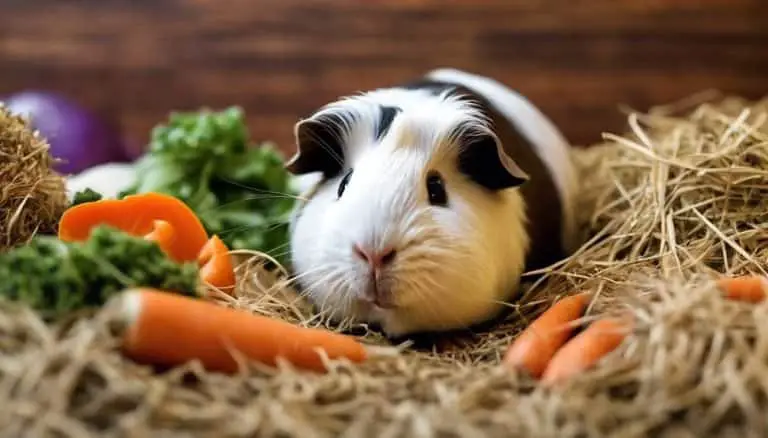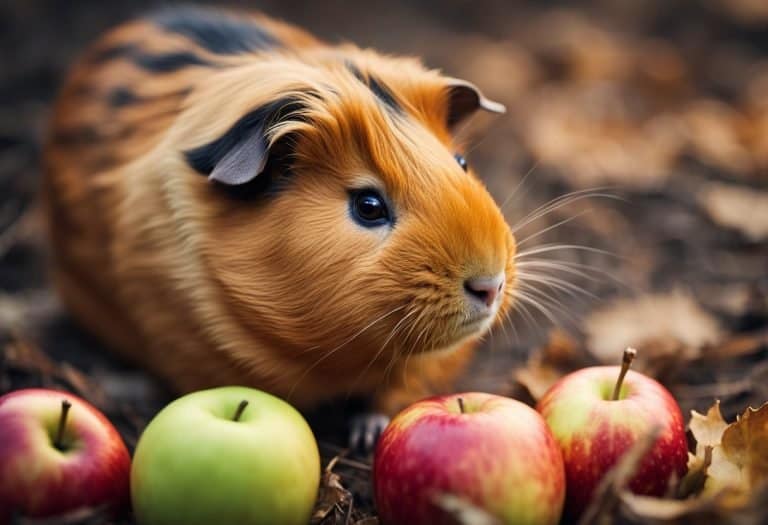How Many Guinea Pigs in a Litter: a Comprehensive Guide
Ever wondered how many guinea pigs can be born in a single litter? The answer might surprise you.
Understanding the intricacies of guinea pig reproduction and litter sizes can provide valuable insights for both new and experienced guinea pig owners.
From the factors influencing litter size to tips for managing larger litters, exploring this detailed guide can help guarantee the health and well-being of these adorable creatures.
Stay tuned to unravel the mysteries behind guinea pig pregnancies and nurturing newborns for a fulfilling guinea pig experience.
Factors Affecting Guinea Pig Litter Size
Factors such as genetics, age, health, nutrition, and environmental conditions greatly impact the size of guinea pig litters.
The genetic makeup of the sow plays a significant role in determining litter size. Some guinea pigs may be predisposed to having smaller or larger litters based on their genetic background.
Additionally, the age of the sow is a critical factor. Younger sows tend to have smaller litters, while older and more experienced sows may have larger litters.
Ensuring the sow’s health through proper nutrition and care is essential for the best litter size. A well-balanced diet rich in nutrients can contribute to healthier pregnancies and potentially larger litters.
Environmental conditions also play a part; providing a stress-free environment for the sow, free from disturbances and loud noises, can positively impact litter size. Employing good breeding practices, coupled with a focus on maintaining the sow’s overall well-being, is key to fostering an environment conducive to larger guinea pig litters.
Understanding Guinea Pig Reproduction
In understanding guinea pig reproduction, it’s important to note that female guinea pigs typically give birth to litters ranging from 1 to 8 pups. The gestation period for guinea pigs lasts between 59 to 72 days, during which the mother prepares for the arrival of her offspring. Here are some key points to take into account:
- Guinea pig pups are precocial, meaning they’re born fully furred, with open eyes and teeth, enabling them to navigate their environment shortly after birth.
- Due to their short postpartum estrus, female guinea pigs can have up to 5 litters per year, contributing to their prolific reproductive capabilities.
- Offspring reach maturity quickly and can become fertile at a very young age, sometimes before reaching full adulthood.
Understanding these aspects of guinea pig reproduction sheds light on their remarkable ability to reproduce and highlights the importance of responsible breeding practices.
Caring for Newborn Guinea Pigs
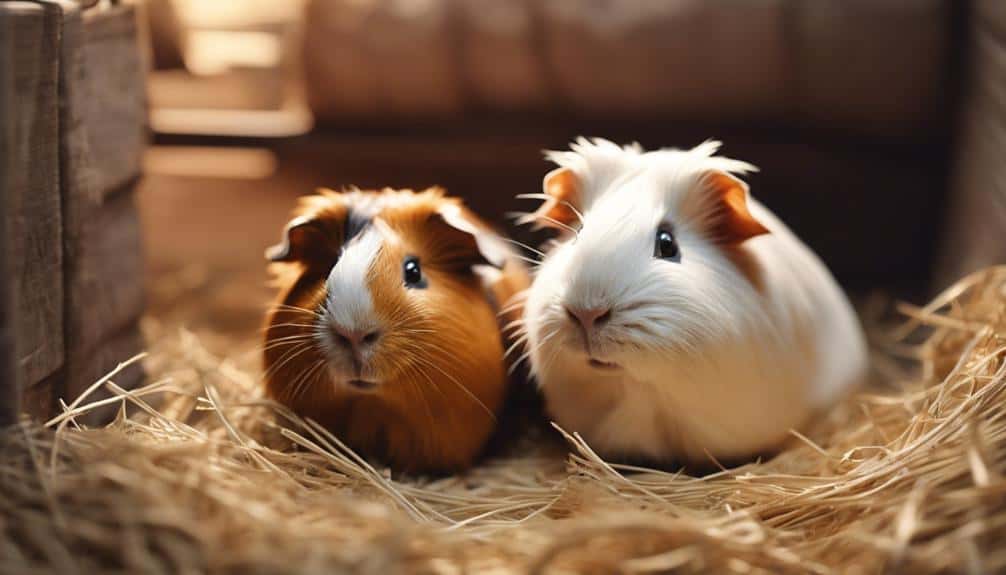
When caring for newborn guinea pigs, it’s important to provide a warm and safe environment to secure their health and well-being. Newborn guinea pigs typically weigh around 3.5 ounces (100 grams) and are born with hair, open eyes, and the ability to run.
While they start nursing from their mother, they can also begin nibbling at solid food within 2 days of birth. As they stop nursing at around 6 ounces (170 grams), essential handling is vital when they’re 2 or 3 weeks old.
Handle newborn guinea pigs with care, as they’re incredibly active and agile right from the start. Ensuring a warm environment is essential for their health and well-being. By providing a safe space and gentle care, newborn guinea pigs can thrive and grow into healthy adults.
Tips for Managing Larger Litters
To effectively manage larger litters of guinea pigs, ensuring ample space and resources is essential for their well-being and development. When dealing with a bigger litter size, it’s important to provide the following:
- Monitor the Mother’s Behavior: Watch the mother guinea pig closely to make sure she’s adequately caring for and nursing all the pups. Intervene if any pup seems neglected.
- Increase Nutritional Offerings: Due to the larger number of pups, the mother will need more food to produce enough milk. Increase the quantity of fresh vegetables and hay to meet the nutritional needs of the growing litter.
- Provide Adequate Space and Separation: Be prepared to separate the pups into smaller groups as they grow to prevent overcrowding and conflicts. Offer a larger nesting area with multiple hiding spots to accommodate the increased number of guinea pigs and ensure they’ve enough space for comfort and safety.
Ensuring the Health of Baby Guinea Pigs
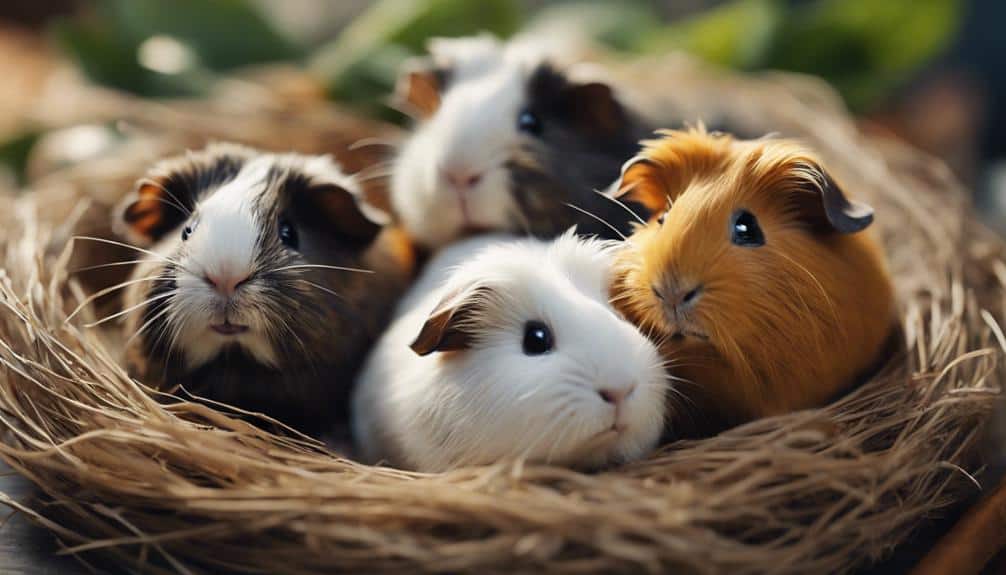
Monitoring the health and development of baby guinea pigs is paramount to ensuring their overall well-being and longevity. Baby guinea pigs should ideally remain with their mother for 3-6 weeks to receive essential nutrition and socialization. By 6-7 weeks, pups are typically fully weaned. Providing proper care, including a balanced diet and a clean living environment, is important for the health of baby guinea pigs. Responsible breeders play an important role in facilitating a smooth shift for pups to new homes, ensuring they go to caring owners who’ll continue to prioritize their well-being.
Regular monitoring is essential to detect any signs of illness or developmental issues early on. This includes observing their eating habits, weight gain, activity levels, and overall behavior. Any concerns should be promptly addressed by a qualified veterinarian to prevent potential health complications. By staying proactive and attentive to the needs of baby guinea pigs, we can help them grow into healthy and thriving adults.
Conclusion
To start, the intricate world of guinea pig reproduction is a fascinating journey filled with surprises and challenges. By understanding the factors influencing litter size, providing proper care for newborns, and ensuring their health, we can navigate this domain with confidence and compassion.
Remember, like a delicate ecosystem, each litter is a unique creation deserving of our attention and care.
So let’s commence on this scientific adventure with curiosity and dedication, nurturing these tiny lives with love and expertise.

